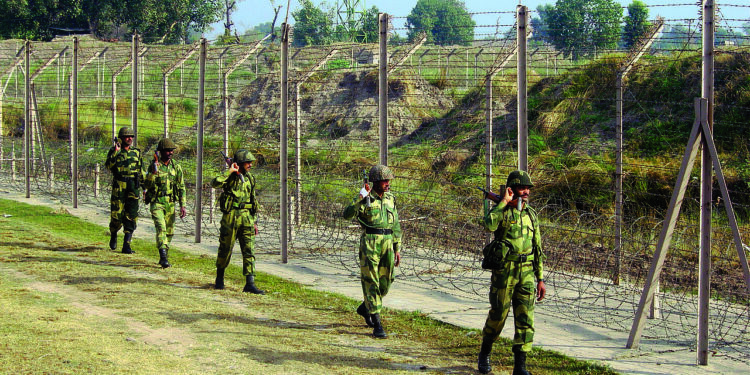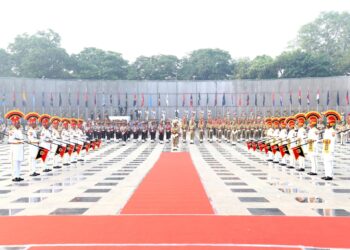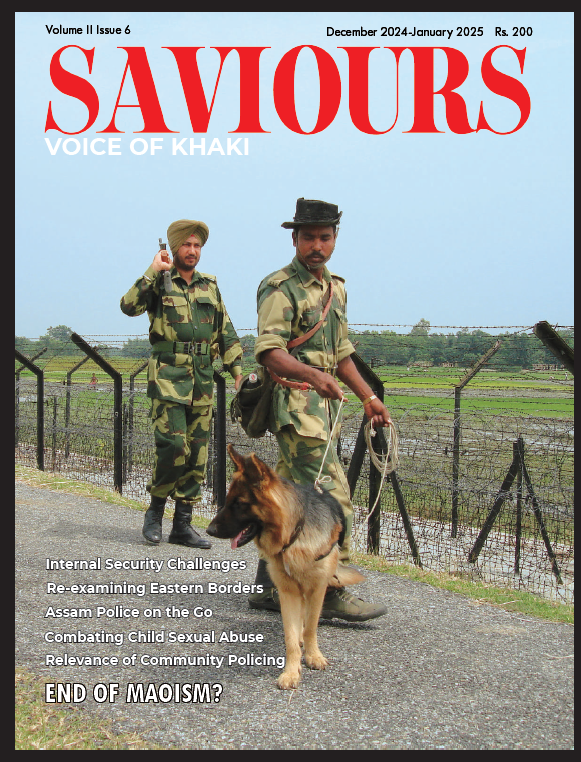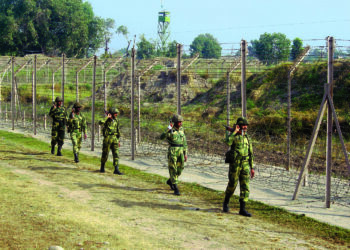Amal Chandra, a noted political analyst and columnist wlks us through the challenges of peaceful co-existence in a neighbourhood that is in turmoil and even hostile at times.
Borders Define Nations
Borders define nations, but for India, they also mirror the discontents and aspirations of a region in constant flux. From the Himalayas to the Bay of Bengal, the fault lines that separate India from its neighbours are increasingly less about geography and more about governance, resilience, and competing narratives of sovereignty. What happens in Kathmandu, Dhaka, or Yangon rarely stays there. The tremors—political, economic, or humanitarian—travel across the frontiers, shaping India’s security doctrines and its moral position in South Asia. Today, New Delhi’s challenge is not merely defending borders but redefining what they mean in a neighbourhood where instability is contagious and influence is a contest of ideas as much as of power.
The Case of Nepal
In the highlands of Nepal, the recent collapse of K.P. Sharma Oli’s government following the digital censorship crisis in September 2025 was more than just another episode in the country’s familiar cycle of political churn. It signified a deeper malaise in a state where fragile governance meets overbearing geopolitical ambition. Beijing’s relentless expansion of hydropower and transport corridors under the Belt and Road Initiative (BRI) has transformed Nepal’s domestic politics into an arena of competing patronage. As China entrenches itself through infrastructure and credit diplomacy, Nepal’s leaders find themselves caught between dependency and assertion, between the rhetoric of sovereignty and the reality of indebtedness. For India, the consequences are immediate. The once-open frontier, which symbolised cultural intimacy and people-to-people trust, has become a site of exposure and unease. Frequent disruptions at the Raxaul and Sunauli crossings have hindered small-scale trade and informal employment networks, while anti-India rhetoric, often politically convenient in Kathmandu, has begun to solidify into a structural suspicion. The legitimacy of India’s developmental role now stands questioned: increasingly, it is seen not as partnership but as paternalism.
To restore credibility, New Delhi must pivot from transactional assistance to transformative cooperation. That means co-investing in Nepal’s institutional capacity, tourism recovery, and youth employment rather than merely policing the border or offering loans. Trust, not tutelage, will determine India’s relevance in Nepal. Influence cannot return through dominance; it must be rebuilt through empathy and shared growth, with New Delhi demonstrating that its interest in Nepal’s stability is moral as much as strategic.
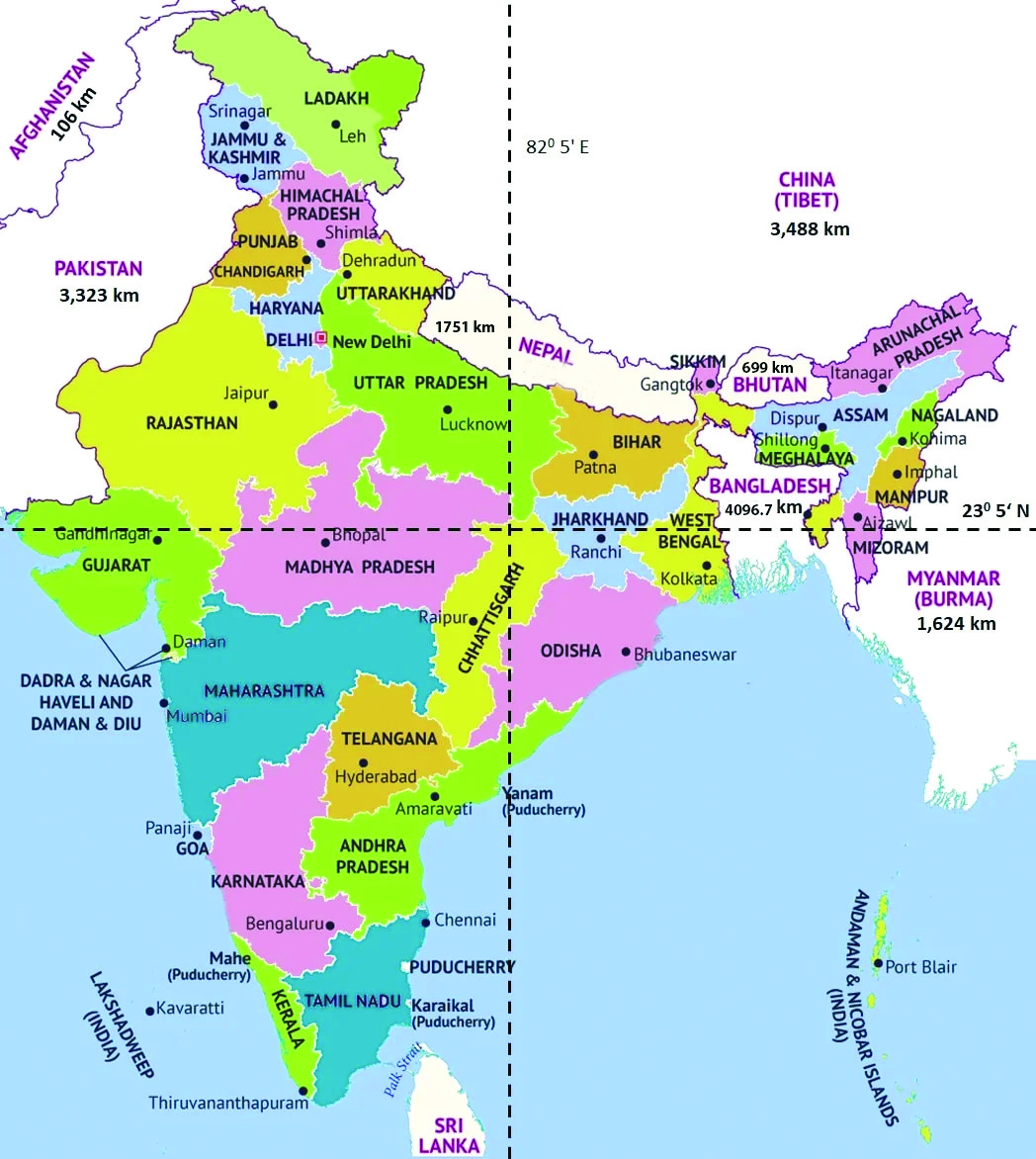 Islamist Agenda in Bangladesh
Islamist Agenda in Bangladesh
If Nepal exposes the perils of political fragility, Bangladesh reflects the volatility of transition. A year after Sheikh Hasina’s exile to Delhi, the interim administration led by Nobel laureate Muhammad Yunus continues to grapple with spiralling unemployment, sectarian unrest, and the erosion of civic order. For a nation once celebrated as South Asia’s economic miracle, the turn toward uncertainty has been abrupt. Across India’s 4,096-kilometre border with Bangladesh—the longest it shares with any neighbour—the movement of people has changed character. It is no longer armies or militants that cross, but the silent, desperate migrations of climate-displaced workers and dispossessed families from the deltaic south. As rising seas and cyclones disfigure livelihoods, the border has become less a line of sovereignty than a humanitarian corridor.
Geopolitically, a subtler shift is underway. The recent thaw between Dhaka and Islamabad, marked by Pakistan’s foreign minister’s visit in August 2025 and the revival of educational and trade exchanges, signals an evolving regional realignment. It may well be the embryonic form of a Bangladesh–Pakistan–China understanding that dilutes India’s strategic cushion in the east. For New Delhi, this must be a moment of recalibration rather than reaction. Building fences and deploying drones can no longer substitute for a coherent neighbourhood policy. Security must be derived not from isolation but from integration. India needs to re-engage Bangladesh as a genuine developmental partner through joint climate adaptation projects, green technology transfers, and incentives for trade and services that benefit both sides. A cooperative framework based on prosperity is far more enduring than one based on political allegiance. If India can make partnership more rewarding than alignment with Beijing or Islamabad, its influence in Dhaka will stabilise naturally.
The Chronic Prick
To the west, Pakistan remains the most volatile variable in India’s strategic calculus. The April 2025 terror strike in Pahalgam that claimed twenty-six lives reignited the familiar spiral of retaliation and rhetoric, culminating in Operation Sindoor and the exchange of fire that reportedly required U.S.-mediated intervention to restore an uneasy ceasefire. Yet the real danger is not in the visible skirmishes but in Pakistan’s internal decay. With inflation hovering near thirty-five per cent, a fatigued military stretched across multiple fronts, and a hollowed-out civilian governance apparatus, Pakistan’s state capacity is eroding. This vacuum provides fertile ground for extremist resurgence: the Tehrik-i-Taliban Pakistan’s growing footprint in Khyber Pakhtunkhwa and the intensification of Baloch militancy together threaten to pull the country inward into chronic instability. Ironically, the China–Pakistan Economic Corridor, once touted as Pakistan’s economic salvation, now binds Beijing’s interests tightly to Islamabad’s dysfunction. It is a corridor that has built dependence, not development.
In such a setting, India must reject the tired binary of “restraint versus retaliation.” What is required is a policy of calibrated containment—bolstering deterrence while sustaining channels of dialogue and employing international platforms to isolate and delegitimise the sponsorship of terror. Even cautious engagement with the Taliban, where regional security interests overlap, must not be dismissed outright. Pragmatism, not pride, should guide New Delhi’s diplomacy. In South Asia’s crowded chessboard, rigidity is often the surest route to irrelevance.
Turbulent Myanmar
Along the northeastern frontier, India confronts yet another theatre of turbulence—Myanmar. The country’s descent into civil war has blurred the line between external crisis and internal unrest. The collapse of the Free Movement Regime earlier this year and the subsequent decision to fence the Indo-Myanmar border have ignited protests in Mizoram and parts of Manipur, where ethnic kinship transcends political boundaries. As rebel coalitions like the Arakan Army advance and the Rohingya displacement deepens, the refugee influx into India—estimated at 150,000 this year—has become a test not only of humanitarian commitment but of federal coordination. China’s quiet mediation between the junta and insurgent groups, coupled with its strategic investments in Rakhine State, has turned Myanmar into another proxy front in the India–China rivalry.
India’s Operation Brahma, which provided swift disaster relief after the March earthquake, demonstrated New Delhi’s potential for moral and logistical leadership. But soft power cannot sustain itself on episodic benevolence. A long-term strategy must link infrastructure diplomacy with community-led development across the Northeast, ensuring that border states perceive themselves as central to India’s regional vision, rather than as neglected peripheries. Proper security will emerge only when border populations feel protected, integrated, and respected.
Is Instability Permanent?
Across these varied frontiers —from the snowcaps of the Himalayas to the mangrove deltas and insurgent forests —the pattern is unmistakable. South Asia’s instability is no longer episodic; it has become systemic, feeding upon itself in a grim cycle. Nepal’s political unrest disrupts trade flows into Bihar; Bangladesh’s turmoil sends waves of migration into Assam; Pakistan’s militancy intensifies insecurity in Kashmir; Myanmar’s civil war fuels volatility in Manipur and Mizoram. Each crisis reverberates across the region’s fragile arteries. In such an environment, India’s security cannot be conceived as insulation. It must be reconceived as integration through stability—anchored in diplomacy, development, and moral clarity.
Conclusion
In this vision, the border ceases to be a wall and becomes a hinge, connecting rather than confining. Technological fortifications—such as smart surveillance, biometric systems, and drone monitoring—are necessary, but insufficient. True resilience lies equally in social architecture: livelihood programs for border communities, regional climate adaptation funds, and humane refugee policies that reflect India’s constitutional ethos. A nation that aspires to regional leadership cannot secure itself through fear alone. It must strike a balance between strategic prudence and ethical purpose. The test before New Delhi is therefore twofold: to defend its territory, and to define the moral architecture of South Asia. It must persuade its neighbours, by example, not coercion, that stability under Indian stewardship is both more humane and more sovereign than dependency under China’s orbit.
Great powers are not defined merely by the strength of their armies but by the steadiness of their vision. India’s geography has always been its destiny, yet geography alone no longer guarantees security. Foresight, restraint, and creative diplomacy must replace nostalgia for hegemony. In this perilous neighbourhood, strength will be measured less by how high India can raise its walls and more by how wide it can extend its embrace. The subcontinent’s future will not be determined by who draws the lines, but by who has the imagination to transcend them.


